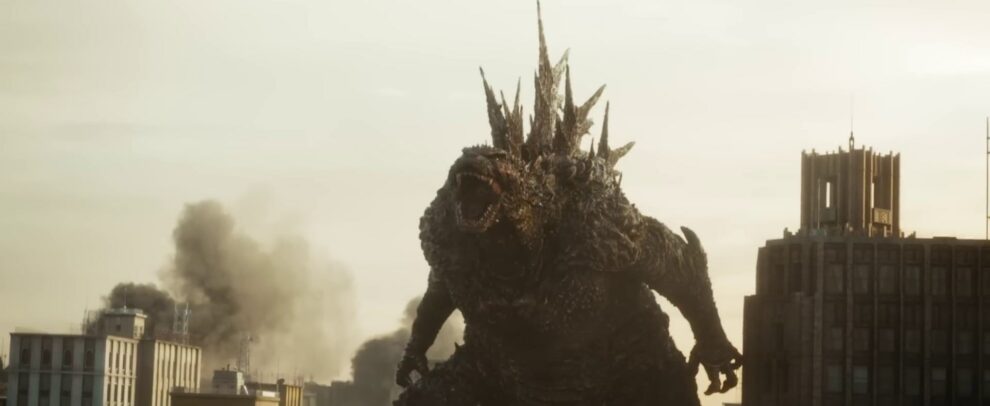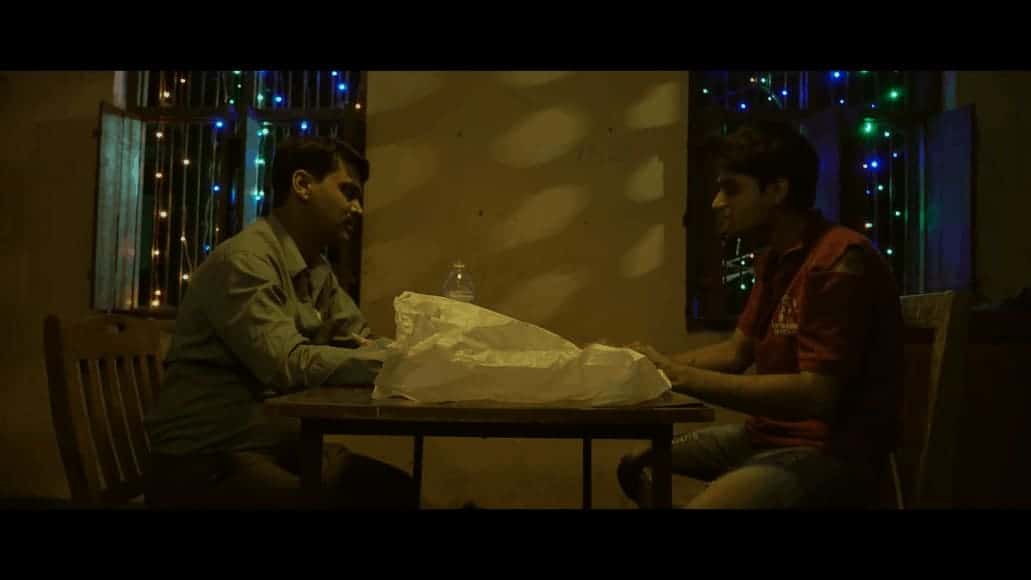Takashi Yamazaki's latest feature, “Godzilla Minus One,” is a terrific new entry to the title monster's extensive franchise. Prior, the director had depicted the character in various media, most notably a cameo in the opening of “Always: Sunset on Third Street 2.” For “Minus One,” Yamazaki sets the story in postwar Japan and draws influence from the original “Godzilla” directed by Ishiro Honda, Shusuke Kaneko's “GMK: Giant Monsters All-Out Attack,” and Hideaki Anno and Shinji Higuchi's “Shin Godzilla.” After closing out the 36th Tokyo International Film Festival, the film opened strong for its theatrical release, becoming a financial and critical success.
Word War II closes, and traumatized kamikaze pilot Koichi Shikishima returns to a devastated Japan under American occupation and is further met with tragedy. Koichi is plagued with survivor's guilt while suffering PTSD from a horrific encounter he experienced on Odo Island. Yet he finds comfort in a relationship he forms with a woman named Noriko Oishi. The two care for an orphaned child named Akiko, starting a surrogate family as they desperately try to heal. Yet, as the country gradually rebuilds, a new threat emerges with the appearance of a radioactive giant monster called Godzilla. Additionally, the Japanese government offers no support, and the United States can't help, due to their ongoing tensions with the USSR that would eventually escalate into the Cold War. With limited resources, the Japanese citizens are left to fend for themselves and do everything they can to stop this mutated destructive behemoth from further plunging the nation into irreparable ruins.
“Godzilla Minus One” is sharply directed and written from start to finish. Takashi Yamazaki's love for Godzilla is clear, but the movie is more than a celebration of the popular franchise. It effectively utilizes its period piece setting to create a dramatic, character-driven story of overcoming trauma. With that, it does a solid job with its world-building. Like in his previous works, Yamazaki's portrayal of history is heavily romanticized, in keeping with the style of his “Always: Sunset on Third Street” series, but never to the point that it feels offensive, and still manages to add a level of realism that was present in his war films “The Eternal Zero” and “The Great War of Archimedes.”
Check also this interview
Along with compelling storytelling, “Godzilla Minus One” is thematically immersive. Takashi Yamazaki effectively implements an anti-war message and emphasizes Godzilla's existence as a living embodiment of the horrific realities of nuclear warfare. Additionally to modernizing the timeless allegory of the 1954 film, he promotes the theme of a community of people, regardless of their differences, coming together to help one another in dire times. There's also the humanistic presentation of determination for growth, searching for forgiveness, acceptance of reality, love for one another, and the will to live. Even with the movie's emphasis on melodrama, it's theming never feels obnoxiously forced and instead dramatically fitting and welcomed, making for an experience that, at times, is very emotional. However, as is typical for the director, humor is naturally integrated, which generally lands and nicely lightens the mood occasionally in contrast to the otherwise grim tone.
The historical setting, albeit romanticized, is appropriately utilized to provide thought-provoking social commentary. For one, the film addresses the ruthless treatment the Imperial Japanese Army imposed on their soldiers and the psychological effects of that, such as with kamikaze pilots. Additionally, major criticism is pointed towards the Japanese government and their complete lack of consideration for the citizens due to prioritizing focus on eccentric nationalism and economic power. Furthermore, even with the historical context, the movie isn't interested in villainizing the United States, even having the Americans warn Japan of Godzilla's pending arrival and lessening the occupation restraints to use the limited resources available.
An aspect that could have been explored further is delving into the conditions of the postwar occupation of Japan. Most references are indirect mentions, some of which may go over the viewers' heads. Historically, despite their overwhelming presence at the time, an American soldier never appears onscreen, save for a newsreel montage featuring military leader Douglas MacArthur. Whether this choice was intentional or merely due to budgetary constraints is unknown. Perhaps this was a deliberate decision to secure focus on the narrative's civilian perspective and consideration for an international audience. Still, it could have lent itself to more dramatic tension.
Despite that critique, the movie is greatly elevated by its memorable human characters, brought to life by a cast that wonderfully complements one another. Ryunosuke Kamiki is great as Koichi Shikishima, who desperately wants to overcome his PTSD and guilt while wanting to seek comfort and redemption, going through a character arc that is exceptionally done, largely thanks to his performance. Complementing Shikishima through a touching relationship is Noriko Oishi, played wonderfully by Minami Hamabe, who wishes to work toward a positive postwar future while also displaying love and care for her troubled male companion and their surrogate daughter Akiko, whom child actor Saki Nagatani does a surprisingly good job at playing. Munetaka Aoki, like the lead, makes Sosaku Tachibana's journey of overcoming pain and loss feel genuine. Hidetaka Yoshioka has fun as the scientist Kenji Noda, who creatively devises a plan to try and defeat Godzilla. Sakura Ando balances being overwhelmed by tragedy and slowly revealing her humane side as Sumiko Ota. Other supporting actors like Yuki Yamada and Kuranosuke Sasaki are also fun to watch here.
Regarding Godzilla, this depiction is easily one of the character's most memorable and terrifying renditions. Takashi Yamazaki had stated he wanted to make his portrayal of the character scary, and he succeeded. Fans who may have found recent iterations too stoic or thematically drained are given a healthy balance here. Beyond its great design, which invokes fear and awe, the creature maintains the idea of being a living embodiment of the horrors of nuclear warfare, a point further driven home in key scenes, including when it uses its atomic breath. The monster is also very reactive, full of rage, lashing out as a vengeful piece of nature against humanity for causing its horrific existence. Godzilla's screentime is sparingly used, yet its presence is always looming even when the monster is offscreen, and when onscreen, it is overwhelming, largely thanks to the film's great sense of scale. The upgraded 1954 roar also adds a nice imposing touch.
On a technical level, “Godzilla Minus One” is a crowning achievement for Japanese filmmaking. The special effects directed by Takashi Yamazaki are outstanding, showcasing how far CGI has come in Japan. Godzilla is terrifically rendered and animated, and the action sequences are spectacular. The highlight is Godzilla's attack on Ginza, a mesmerizing and horrific scene. Visually, the rest of the film also looks great, thanks to commendable costume and set design and Kozo Shibasaki's stellar cinematography. The music score by Naoki Sato is excellent and helps give the movie a haunting and foreboding atmosphere. There's a balance of original tracks and newly composed arrangements of Akira Ifukube's iconic compositions. Beyond the musical scoring, the overall sound design is top-notch.
“Godzilla Minus One” is a great film, providing entertainment and themes that engross viewers further into the experience. Yamazaki gives audiences plenty of spectacular monster action and simultaneously engages them with a humanistic story containing a powerful anti-war message that addresses the horrors of nuclear weaponry and promotes the idea of individuals supporting each other through dark times. The mesmerizing reimagining of Godzilla will satisfy long-time fans and newcomers.















